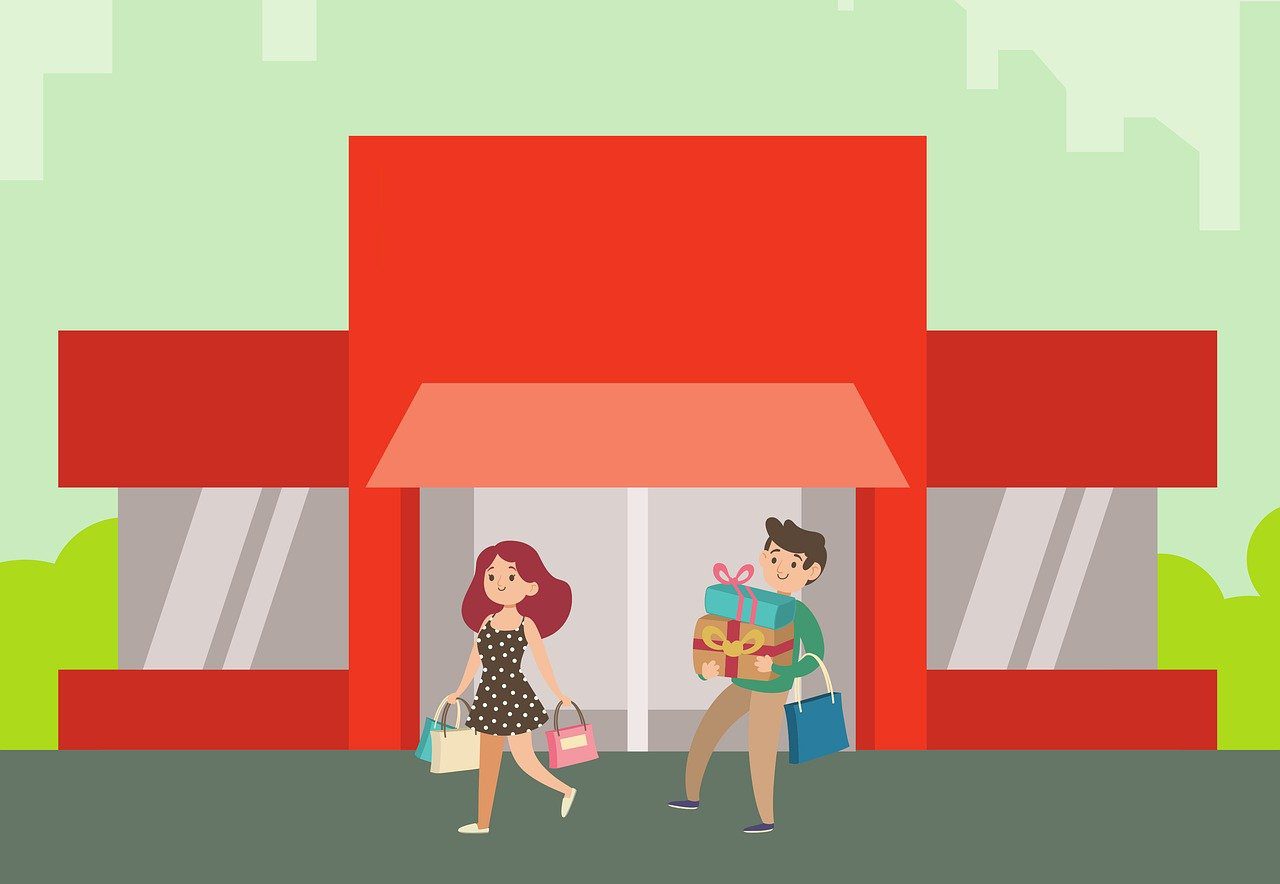Disclosure:
Some of the links on this website are affiliate links, which means that if you click on one of the links and sign up or make a purchase, we may earn a small commission at no additional cost to you. This commission helps support the maintenance and operation of this site.
We only recommend products or services that we believe will provide value to our readers. Our opinions and recommendations are based on our own research and experiences, and we strive to offer honest and unbiased content.
Please note that your support through these affiliate links is greatly appreciated, as it helps us continue to provide quality content and resources.
Thank you for your support!
A Complete Guide
Pop-up shops are a fantastic way for entrepreneurs to test products, reach new customers, and create buzz without the long-term commitment of a traditional retail space. Whether you’re selling clothing, artisanal goods, or promoting a service, a pop-up shop allows you to create a temporary retail experience in a variety of locations. This post will walk you through everything you need to know to start a pop-up shop business, including legal considerations, startup costs, and tips for maximizing your potential profits.
1. What You Need to Start a Pop-Up Shop Business
Starting a pop-up shop requires careful planning and a few key essentials. Here’s a breakdown of the steps you’ll need to take:
a. Business License and Legal Requirements
- Business License: You’ll likely need a business license to operate legally. This can typically be obtained through your city or county government, and the requirements will vary depending on your location.
- Temporary Vendor Permits: Some cities require pop-up shops to apply for temporary vendor permits, especially if you’re setting up at public events or outdoor spaces.
- Sales Tax Permit: If you’re selling physical products, you’ll need to collect sales tax. A sales tax permit allows you to collect and report the sales tax to your local and state governments.
- Insurance: Many property owners or event coordinators will require that your pop-up shop has general liability insurance. This will protect you if someone gets hurt on your premises or if property damage occurs.
b. Startup Costs
The startup costs for a pop-up shop can vary depending on the size of your business, the location, and the duration of your lease. Here are some common expenses to consider:
- Rent or Leasing Fees: Depending on the location and duration, leasing a space can range from a few hundred to several thousand dollars. Short-term leases are typically more expensive per day or week, but they offer more flexibility.
- Display and Equipment: You’ll need shelving, racks, tables, or display cases to showcase your products. You may also need point-of-sale (POS) systems, signage, and promotional materials.
- Inventory: If you’re selling products, you’ll need enough stock to last the duration of your pop-up. Inventory costs will vary depending on your niche.
- Marketing and Advertising: Promoting your pop-up shop is essential to attract customers. You might spend on social media ads, flyers, or influencer partnerships to get the word out.
- Miscellaneous: You may need extra permits (like event permits), utilities, security deposits, or temporary staff.
Estimated Startup Costs:
- Small Pop-Up (local event or small retail space): $1,000–$5,000
- Medium Pop-Up (mall kiosk or dedicated pop-up store): $5,000–$15,000
- Large Pop-Up (prime retail space or large-scale event): $15,000–$30,000+
2. How to Start a Pop-Up Shop Business
Once you have your legal and financial foundation set, it’s time to start building your pop-up business.
a. Define Your Concept and Goals
Before launching, you need a clear idea of what your pop-up shop will offer. Ask yourself:
- What products or services will I offer?
- What’s the purpose of my pop-up (brand awareness, product testing, short-term sales)?
- Who is my target audience?
Having clear answers to these questions will help you create a focused and engaging pop-up experience.
b. Find the Perfect Location
Finding the right location is crucial for a successful pop-up. Here are a few tips:
- Mall Kiosks or Pop-Up Spaces: Many malls offer short-term leases for kiosks or inline spaces. This allows you to tap into established foot traffic, but rent can be higher than independent locations.
- High-Traffic Areas: Look for locations with lots of foot traffic, such as busy streets, shopping centers, or outdoor events.
- Partner with Other Retailers: You can collaborate with local boutiques or retailers who are open to hosting pop-up events in their existing spaces. This reduces your costs and can create a win-win partnership.
- Short-Term Lease Platforms: Platforms like Storefront, Appear Here, and Popup Shops allow you to rent temporary retail space without a long-term commitment. These platforms also often come with built-in insurance and legal support.
c. Set Up Your Shop
Once you’ve secured a location, it’s time to create an appealing setup:
- Layout and Display: Design a layout that showcases your products in an eye-catching way. Invest in portable displays, racks, or shelves that are easy to set up and break down.
- Signage and Branding: Make sure you have clear signage and branding to attract customers. A professional look can help build credibility, even if your shop is only temporary.
- POS System: Set up a portable POS system to handle transactions. Popular options include Square, Shopify POS, and Stripe, which can all process payments via card or mobile.
- Marketing: Promote your shop through social media, local influencers, email marketing, and even old-fashioned flyers. Engage with your target audience ahead of the event to build anticipation.
3. Potential Profits of a Pop-Up Shop
The potential profits of a pop-up shop depend on various factors, including location, product pricing, and customer demand.
- Revenue: Depending on the niche and location, pop-up shops can generate anywhere from a few hundred to several thousand dollars per day. The key is to have enough inventory and price your products or services competitively.
- Profit Margins: Profit margins can vary based on costs like rent, marketing, and inventory. A well-executed pop-up could see profit margins of 10% to 50%, depending on the industry.
For example:
- Clothing or Accessories: If your shop is in a high-traffic mall, you could expect daily sales of $1,000–$5,000, depending on your product line and pricing. If you have a 40% profit margin, you could take home $400–$2,000 per day.
- Food and Beverage: A pop-up selling food might have lower profit margins (around 10–20%) but high turnover. If you sell $2,000 in food items per day, a 15% profit margin would result in a $300 profit.
4. Tips and Tricks for Starting a Successful Pop-Up Shop
a. Find the Right Location
The success of your pop-up will largely depend on your location. You want to be where your target audience frequents. Research demographics, foot traffic, and the type of people who visit your potential locations.
- Tip: If you’re testing a product, consider renting in different locations to see where demand is strongest.
b. Optimize Your Shop for Foot Traffic
Attract people to your store with visually appealing displays, enticing window decorations, and clear signage. Use lighting, colors, and interactive elements (like product demos) to create an engaging environment.
- Tip: Offer limited-time discounts or promotions to encourage immediate purchases.
c. Partner with Events
Align your pop-up with local events, festivals, or special occasions. These are opportunities to capitalize on a ready-made crowd.
- Tip: Collaborate with other local businesses or influencers to co-host events that draw more people to your shop.
d. Leverage Social Media
Promote your pop-up extensively on social media platforms like Instagram, Facebook, and TikTok. Engage influencers or local content creators to visit and promote your shop.
- Tip: Use location-based hashtags and encourage visitors to tag your pop-up when they post on social media.
e. Focus on Customer Experience
Create a memorable experience by offering excellent customer service and a unique atmosphere. People are more likely to make a purchase or recommend your shop if they feel connected to your brand.
- Tip: Provide small perks like free samples, giveaways, or demonstrations to leave a lasting impression.
Products for a Pop-Up Shop
1. Clothing and Apparel
- Trendy streetwear, vintage finds, or locally made clothing.
- Seasonal collections or limited-edition pieces.
- Accessories like hats, scarves, belts, and sunglasses.
2. Handmade Jewelry
- Custom or handcrafted necklaces, bracelets, rings, and earrings.
- Eco-friendly or ethically sourced jewelry.
- Personalized jewelry with engraved names or initials.
3. Artisanal Home Goods
- Handcrafted ceramics, pottery, or glassware.
- Locally made candles, soaps, or diffusers.
- Sustainable and eco-friendly household products (bamboo toothbrushes, reusable straws, etc.).
4. Beauty and Skincare Products
- Natural or organic skincare products (lotions, face masks, serums).
- Handmade soaps, bath bombs, and essential oils.
- Custom makeup products (lipsticks, eyeshadow palettes).
5. Gourmet Food Items
- Specialty snacks like gourmet popcorn, jerky, or cookies.
- Locally sourced honey, jams, and sauces.
- Artisanal chocolates or confections.
6. Books or Stationery
- Independent or self-published books.
- Custom notebooks, journals, or planners.
- Unique greeting cards, art prints, or posters.
7. Pop Culture Collectibles
- Limited-edition action figures, Funko Pop! vinyl figures.
- Comic books, graphic novels, or fan art.
- Retro or nostalgic items like vinyl records or vintage video games.
8. Seasonal or Holiday-Themed Products
- Holiday decorations, ornaments, or seasonal gifts.
- Valentine’s Day, Halloween, or Christmas-themed merchandise.
- Special gift boxes or baskets tailored to the season.
9. Pop-Up Coffee Shop or Food Stand
- Specialty coffee, teas, or hot chocolate.
- Pre-packaged snacks or sandwiches for takeout.
- Smoothies, juices, or fresh-pressed drinks.
10. Fitness or Outdoor Gear
- Yoga mats, water bottles, or workout clothing.
- Outdoor gear like hiking accessories, portable grills, or camping equipment.
- Eco-friendly activewear or sports equipment.
Services You Can Offer at a Pop-Up Shop
1. Personal Styling Services
- Offer one-on-one fashion consultations to help customers pick out outfits.
- Provide personalized advice on clothing or accessories.
- Upsell with the apparel you’re selling in-store.
2. Custom Product Personalization
- On-site engraving or embroidery services for personalized gifts (mugs, bags, clothing, etc.).
- Offer custom printing for T-shirts, phone cases, or hats.
- Create instant personalization stations for products like journals or jewelry.
3. Art Commissions
- Offer custom portraits, sketches, or paintings on-site.
- Have a local artist do live painting or calligraphy.
- Provide digital illustration or photography services for custom orders.
4. Pop-Up Photo Booth or Event Space
- Set up a themed photo booth for event-goers, offering instant photo prints or digital copies.
- Charge for themed photoshoots (e.g., holiday or pet photos).
- Host small events, workshops, or classes in your space (crafting, cooking, etc.).
5. Wellness Services
- Provide quick chair massages or hand massages.
- Offer consultations for skincare routines using the products you’re selling.
- Host mini yoga or meditation sessions.
6. Tech Repair Services
- Offer on-the-spot smartphone or laptop repairs.
- Provide services like screen replacements, battery swaps, or phone case fittings.
- Upsell tech accessories like chargers, headphones, or cases.
7. Pop-Up Barbershop or Salon
- Offer haircuts, beard trims, or hairstyling.
- Provide makeup applications or express facials.
- Promote beauty products or grooming tools used in the service.
8. Custom Print-on-Demand Products
- Use a print-on-demand station to create custom T-shirts, mugs, or tote bags while customers wait.
- Personalize products with names, slogans, or designs chosen by the customer.
- Print and customize items like phone cases, notebooks, or art prints.
9. Interactive Product Demonstrations
- Offer demos of your products, such as skincare routines, makeup tutorials, or kitchen gadgets.
- Engage customers by letting them try out or test the products before purchase.
- Host live cooking or craft demonstrations, showing off items that can be purchased at your pop-up.
10. Workshops or Classes
- Host DIY workshops like candle-making, jewelry crafting, or painting.
- Offer skill-building sessions, such as photography classes or cooking demonstrations.
- Charge a small fee for workshop attendees and provide materials for them to take home.
These product and service ideas can be tailored to fit the style of your pop-up shop, location, and target market. Pop-up shops thrive when they provide customers with something unique, limited-edition, or experiential, so blending products with services and interactive elements can lead to a more successful event.
Pop-up shops are an excellent way to test the retail waters, gain new customers, and increase brand awareness without the financial commitment of a permanent location. By obtaining the necessary legal permits, finding the right location, keeping startup costs manageable, and focusing on customer experience, you can create a profitable and engaging pop-up shop business. With careful planning and creativity, you’ll be well on your way to turning your pop-up into a successful venture.
FAQ: How to Start a Pop-Up Shop
1. What is a pop-up shop?
A pop-up shop is a temporary retail space that appears for a short period, often to test a new market, launch a product, or create a unique shopping experience. Pop-up shops can be set up in various locations, including vacant storefronts, event spaces, or even within existing retail stores.
2. What are the benefits of opening a pop-up shop?
The benefits of a pop-up shop include:
- Increased Visibility: Attracts attention and generates buzz for your brand or products.
- Test Market: Allows you to test new products or markets with lower risk compared to a permanent store.
- Seasonal Sales: Ideal for seasonal promotions, holiday sales, or special events.
- Customer Engagement: Creates an opportunity for direct interaction with customers, enhancing brand loyalty.
- Low Overhead: Generally involves lower costs than leasing a permanent retail space.
3. How do I choose a location for my pop-up shop?
When choosing a location:
- Target Audience: Select a location frequented by your target market.
- Foot Traffic: Look for areas with high foot traffic to maximize exposure.
- Visibility: Choose a spot that is easily visible and accessible.
- Size and Layout: Ensure the space is suitable for your setup and product display needs.
- Cost: Consider the rental cost and any additional fees associated with the location.
4. What are the essential steps to set up a pop-up shop?
Steps to set up a pop-up shop include:
- Define Your Goals: Determine the objectives of your pop-up shop, such as brand awareness or testing a new product.
- Plan Your Budget: Outline expenses, including space rental, design, inventory, staffing, and marketing.
- Secure a Location: Find and lease a space that aligns with your goals and budget.
- Design Your Shop: Create an appealing layout and décor that reflects your brand.
- Promote Your Pop-Up: Use social media, local advertising, and partnerships to generate buzz.
- Set Up Operations: Prepare your inventory, arrange staffing, and ensure you have the necessary equipment and technology.
- Launch: Open your pop-up shop and engage with customers.
5. How long should a pop-up shop run?
The duration of a pop-up shop can vary based on your goals and resources. Typical durations range from a few days to several months. Short-term pop-ups are ideal for quick promotions or seasonal events, while longer durations can be used to build deeper customer relationships or test new markets.
6. What should I include in the design of my pop-up shop?
Key design elements include:
- Branding: Ensure your shop reflects your brand identity with consistent colors, logos, and messaging.
- Product Display: Organize products in an attractive and accessible manner.
- Layout: Create a layout that facilitates smooth customer flow and maximizes space utilization.
- Lighting: Use appropriate lighting to highlight products and create an inviting atmosphere.
- Signage: Include clear and informative signs for promotions, prices, and store policies.
7. How do I promote my pop-up shop?
Effective promotion strategies include:
- Social Media: Share details about your pop-up shop on platforms like Instagram, Facebook, and Twitter.
- Local Advertising: Use flyers, posters, and local event listings to reach potential customers in the area.
- Collaborations: Partner with local influencers or businesses to increase visibility.
- Email Marketing: Notify your existing customers about the pop-up shop through email campaigns.
- Press Releases: Send press releases to local media and bloggers to generate coverage.
8. What are the legal requirements for opening a pop-up shop?
Legal requirements may include:
- Business License: Ensure you have the necessary permits and licenses to operate in the location.
- Insurance: Obtain insurance coverage for liability and property damage.
- Health and Safety Regulations: Comply with local health and safety codes, especially if selling food or beverages.
- Sales Tax: Register for a sales tax permit if required and collect sales tax on transactions.
9. How do I handle inventory for a pop-up shop?
Managing inventory involves:
- Forecasting Demand: Estimate the amount of inventory needed based on your expected foot traffic and sales goals.
- Stock Management: Keep track of inventory levels and ensure you have enough stock to meet demand without overstocking.
- Replenishment: Plan for restocking if needed, especially for longer-duration pop-ups.
10. How can I measure the success of my pop-up shop?
Evaluate the success of your pop-up shop by:
- Sales Metrics: Track total sales, average transaction value, and revenue compared to your goals.
- Customer Feedback: Gather feedback from customers through surveys or direct interactions.
- Foot Traffic: Monitor the number of visitors to your shop.
- Social Media Engagement: Measure social media activity and engagement related to your pop-up shop.
- Brand Exposure: Assess the impact on brand awareness and customer acquisition.
11. What should I do after the pop-up shop ends?
After your pop-up shop ends:
- Analyze Results: Review sales data, customer feedback, and overall performance.
- Follow Up: Reach out to customers who visited your shop, thanking them and keeping them informed about future events or promotions.
- Reflect and Plan: Use insights gained to improve future pop-up shops or other marketing strategies.
- Break Down the Shop: Clean up the space and handle any return of rented equipment or fixtures.
By addressing these key aspects, you can effectively plan, execute, and evaluate a successful pop-up shop, creating a memorable experience for your customers and achieving your business objectives.





Leave a Reply